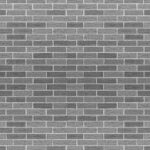
In the fast-paced world of software development, maintaining legacy Java codebases can be a challenging endeavor. As technology evolves, older code may become outdated and difficult to manage. This is where dependency graphs, specifically Java Dependency Graph, come to the rescue. In this blog post, we’ll explore how these essential tools can simplify the process of maintaining legacy Java codebases, making it more efficient and less error-prone.
Understanding Legacy Java Codebases
Legacy Java codebases refer to older Java applications or libraries that have been in use for a significant period. Over time, these codebases can become complex, with numerous interdependencies, making them hard to update, troubleshoot, or enhance.
The Role of Java Dependency Graphs
Java Dependency Graphs are visual representations of the dependencies between classes, packages, and modules within a Java application. These graphs provide a clear overview of the relationships between different components, which is essential for maintaining legacy codebases.
1. Visualizing Dependencies
One of the primary advantages of Java Dependency Graphs is their ability to visualize dependencies. This visualization helps developers identify which components rely on others and how changes in one part of the code can affect the entire system. By having a clear visual representation, developers can make informed decisions about where to focus their efforts.
2. Identifying Outdated Dependencies
Legacy codebases are notorious for outdated dependencies. Over time, library versions may become obsolete, and it’s crucial to identify and update these dependencies to enhance security, performance, and compatibility. Java Dependency Graphs can help pinpoint such dependencies, ensuring that the codebase remains up-to-date.
3. Resolving Circular Dependencies
Circular dependencies, where components depend on each other in a loop, can be a nightmare in legacy code. Java Dependency Graphs highlight these circular dependencies, making it easier to break the loops and refactor the codebase for improved maintainability.
4. Eliminating Dead Code
In legacy codebases, it’s common to find unused or “dead” code that consumes valuable resources and complicates maintenance. Java Dependency Graphs reveal which classes or methods are no longer in use, allowing developers to safely remove them and declutter the code.
Optimizing Java Dependency Graphs for Legacy Codebases
When dealing with legacy code, it’s essential to optimize the use of Java Dependency Graphs to streamline maintenance and ensure a smooth transition into the modern development landscape.
1. Regularly Update and Visualize the Graph
To keep your dependency graph current, make it a part of your regular development process. Whenever you make changes to the codebase, update and visualize the graph to reflect the most recent state of dependencies.
2. Prioritize Updates
The graph can guide you in prioritizing updates. Focus on components with the most critical dependencies first, ensuring that your legacy code remains stable and secure.
3. Document Changes
As you make changes to the legacy codebase, document them using the graph. This documentation will provide valuable insights for other team members and future developers working on the project.
Conclusion
In the world of software development, maintaining legacy Java codebases is an ongoing challenge. Java Dependency Graphs offer an invaluable solution by providing a clear visual representation of dependencies, helping to identify and resolve issues, and streamline the codebase for better maintenance.
By embracing Java Dependency Graphs, you can ensure that your legacy code remains relevant, efficient, and secure. Regularly updating and optimizing the graph will make your journey in maintaining legacy Java codebases more manageable and less prone to errors. With the power of Java Dependency Graphs at your disposal, legacy codebases no longer need to be a source of frustration, but rather an opportunity for improvement and enhancement.
Are you ready to simplify your legacy Java codebase maintenance? Java Dependency Graphs are the key to success!
Remember, Java Dependency Graphs are a crucial asset for maintaining and optimizing legacy codebases. Make sure you integrate them into your development process and use them to their full potential. Your legacy Java codebase will thank you for it!
With Java Dependency Graphs, you’re not just maintaining legacy code; you’re transforming it into a robust, efficient, and future-ready solution. Visit Java Code Review for more information on codding.











